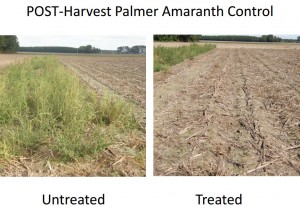The Importance of Weed Management Following Corn Harvest (Collins & York)
go.ncsu.edu/readext?366403
en Español / em Português
El inglés es el idioma de control de esta página. En la medida en que haya algún conflicto entre la traducción al inglés y la traducción, el inglés prevalece.
Al hacer clic en el enlace de traducción se activa un servicio de traducción gratuito para convertir la página al español. Al igual que con cualquier traducción por Internet, la conversión no es sensible al contexto y puede que no traduzca el texto en su significado original. NC State Extension no garantiza la exactitud del texto traducido. Por favor, tenga en cuenta que algunas aplicaciones y/o servicios pueden no funcionar como se espera cuando se traducen.
Português
Inglês é o idioma de controle desta página. Na medida que haja algum conflito entre o texto original em Inglês e a tradução, o Inglês prevalece.
Ao clicar no link de tradução, um serviço gratuito de tradução será ativado para converter a página para o Português. Como em qualquer tradução pela internet, a conversão não é sensivel ao contexto e pode não ocorrer a tradução para o significado orginal. O serviço de Extensão da Carolina do Norte (NC State Extension) não garante a exatidão do texto traduzido. Por favor, observe que algumas funções ou serviços podem não funcionar como esperado após a tradução.
English
English is the controlling language of this page. To the extent there is any conflict between the English text and the translation, English controls.
Clicking on the translation link activates a free translation service to convert the page to Spanish. As with any Internet translation, the conversion is not context-sensitive and may not translate the text to its original meaning. NC State Extension does not guarantee the accuracy of the translated text. Please note that some applications and/or services may not function as expected when translated.
Collapse ▲Hopefully, by now all cotton fields have been hand-weeded before viable seed were produced. As mentioned in the previous article regarding weed management, hand-weeding is the first step and a big step in weed management for the following season. However, there is one more important step that growers can take to further reduce the seedbank of Palmer amaranth. Neglecting this important step can undo prior efforts to holistically reign in, control, or reduce the seedbank of Palmer amaranth.
Corn harvest is just around the corner. Once corn harvest is complete, it is easy to forget about those fields for a while, as harvest of other crops will soon begin following corn harvest. As corn is generally harvested rather early in the fall (August – September), small plants that were present in the corn can flourish after harvest. And, new weeds can emerge. Harvested corn fields provide no shading of the soil surface (light is necessary for pigweed germination) and there is plenty of time and heat units before a killing frost to allow for seed production of Palmer amaranth. The photos below illustrate how Palmer amaranth can easily become established after corn harvest, and how well that Palmer amaranth can be controlled with a post-harvest herbicide application. The good news is that Palmer amaranth can be controlled well and relatively economically. A well-timed application of paraquat at 0.75 lb ai/A (3 pt/A of Gramoxone, 2 pt /A of generics) applied prior to seedhead development can effectively control these weeds while significantly reducing the seedbank for the following year. DON’T NEGLECT TO TAKE ACTION IN THESE FIELDS!!



